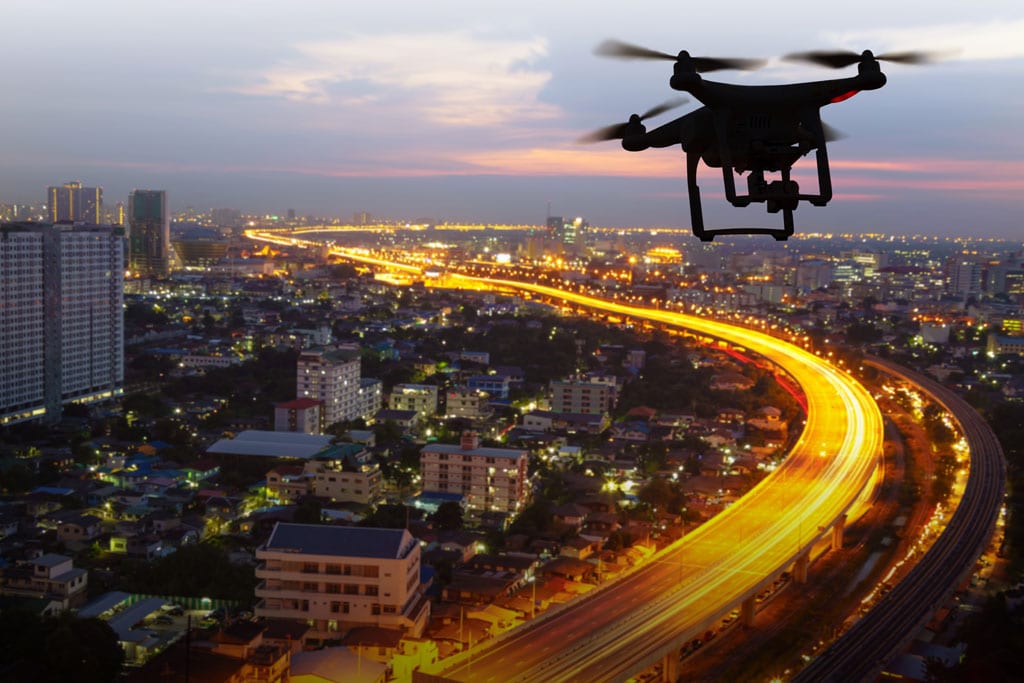It is hard to read an aviation journal these days without being left with the distinct impression that electric power plants and autonomy are poised to become ubiquitous in aviation. How likely is that transition to take place in the medium term? What does the experience and adoption rates of drones teach us about the potential hazards? How likely are we to see Advanced Air Mobility (AAM) vehicles in our city skies in the next few years?

Progress and Roadblocks
There are upwards of 500 eVTOL (electric vertical takeoff and landing) projects underway globally today. While most will shake out, especially given the estimated $1bn development cost, for those that stick it out, the road will be long and bumpy.
The technology might be relatively easy to develop, but the roadblocks to adoption are significant. This includes certification of the vehicles, development of infrastructure (ground and air), public acceptance and the cost of implementation.
What lessons can be learnt from the commercial drone industry? As a leader in drone insurance, Global Aerospace has a unique view of the industry and how it has performed.
Pre-Pandemic Growth in UAS Policies
At the time of writing, COVID-19 is starting to have an impact on all commercial entities, and drone operators will not be immune from the economic impact of social distancing. However, prior to the effects of the virus becoming apparent, the drone industry was starting to find a sense of equilibrium. For many, work was becoming more regular and dependable, as evidenced by the higher number of UAS insurance policies renewing compared to only a year ago.
While only 63% of insurance policies renewed in 2018, 2019 saw a jump to 76%. This is positive news, suggesting that there is commercial opportunity for small drones. That said, this evidence of sustainability comes a full three years after regulations were implemented that were designed to provide the basis for a flourishing industry.
Why has adoption been so slow and what impact might this have on AAM?
Scalability and Safety Concerns
Reliability and safety continue to restrict the potential scalability of the drone industry many have predicted for years. This lack of inherent safety has led many companies to develop their own in-house programs. Rather than rely upon the gig economy and its patchwork approach to safety assurance, larger entities have found greater benefit from developing and managing their own drone operations.
Fleet management services have helped create an environment where risks can be actively managed. These services allow companies to control aircraft maintenance, track pilots’ training schedules and flight time, and address other key components of maintaining safe operating procedures.
While some industry verticals like agriculture have been significantly slower to evolve than predicted, the path to package delivery and the performance of other missions in urban environments has been even harder. Global Aerospace has not seen any significant development in utilization of drones where FAA approval is required.
Of all markers, the FAA’s reluctance to allow flights that require exceptions to Part 107 should be top of mind for those designing the future of urban transportation. Regulators are acting with an abundance of caution.
4 Key Considerations Going Forward
As we look to the future, progress needs to be demonstrated in four key areas:
- Vehicle design and development
- Airspace planning and management
- Vehicle management and operation
- Community integration and acceptance
For regulators to approve new aircraft that have the potential to operate in and around cities, whether carrying passengers or not, the safety case will have to be proven to a significantly higher degree than it has been so far for small drones.
The lack of vehicle certification for drones weighing under 55 lbs. and minimal pilot requirements have created a very low barrier to entry. In this environment, accidents have been frequent.
Industry and government will have to be aligned in their focus on safety for Advanced Air Mobility to develop faster than complex drone operations.
To learn more about our industry-leading products and services for drone operators, manufacturers and all companies in the risk chain, please visit our Unmanned Aircraft Systems page.
